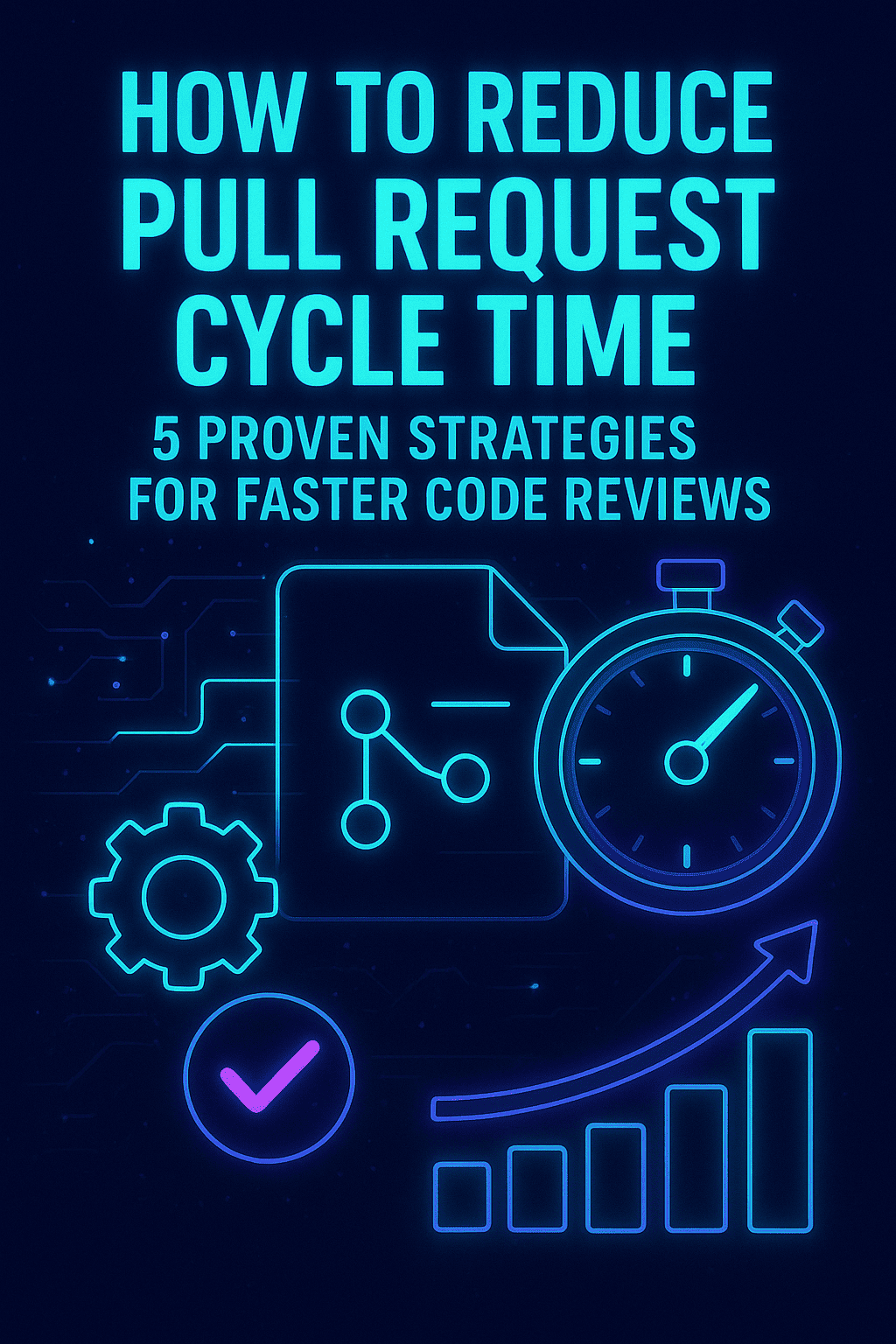Pull requests are the heartbeat of software collaboration. They allow developers to share work, catch bugs earlier, and maintain code quality at scale. But talk to any engineering leader at a growing SaaS or tech-enabled company, and you’ll hear the same frustration: pull requests that sit idle for days.
What looks like a small delay on the surface often ripples into a bigger problem. Developers lose momentum while waiting on feedback. Context slips away, which means when a review finally happens, it takes even longer to digest and refine. Deadlines inevitably drift, features ship late, and developer frustration builds. A VP of Engineering put it bluntly: “We don’t miss deadlines because our engineers are slow at writing code — we miss them because no one reviews quickly enough.”
As teams scale from five to fifty developers, these bottlenecks multiply. PR cycle time — the duration from opening a pull request to merging it — can quietly become the hidden tax that slows your entire delivery pipeline. The good news is that it’s one of the most solvable challenges in software engineering, if addressed with the right blend of process and culture.
Why Pull Requests Get Stuck
Long cycle times often stem from predictable issues. Sometimes PRs are simply too large, leaving reviewers feeling overwhelmed before they even begin. In other cases, responsibility for reviews is unevenly spread — senior engineers carry the lion’s share while others sit idle. Without agreed-upon expectations, reviews slip steadily lower on the to-do list. And, at a cultural level, slow reviews signal that feedback can wait, reinforcing a cycle of stagnation.
Each small inefficiency compounds. A large PR lands with the same senior reviewer who is already overloaded. Days pass without movement because no SLA requires intervention. By the time feedback arrives, the original developer has switched focus, slowing iteration and morale. Multiply this by dozens of pull requests a week, and velocity takes a major hit.
Five Strategies to Reduce PR Cycle Time
High-performing engineering teams combat review delays with a mix of process adjustments and cultural reinforcement. Here are five proven strategies explained in detail:
Keep Pull Requests Small and Incremental
- Large PRs are intimidating and slow to review. Reviewers put them off because they require too much cognitive load at once.
- Smaller PRs (ideally under a few hundred lines of changes) are easier to understand, catch issues earlier, and merge faster.
- Encourage engineers to break features into smaller increments, merging frequently instead of holding back work until it becomes unwieldy.
- Many teams set informal guidelines like “Prefer PRs under 400 lines of changes” to reinforce this behavior.
Set and Enforce Review SLAs
- The root cause of many delays isn’t code quality — it’s waiting. Without deadlines, reviews get deprioritized.
- Establish clear expectations, such as “Every PR gets an initial review within 24 hours.”
- Bring these expectations into sprint rituals — standups, retros, and dashboards — to keep them top of mind.
- Track adherence: consistently missed SLAs usually point to either workload imbalance or deeper process issues.
Distribute Review Workloads More Equitably
- A common pattern: senior developers do most of the reviews, while junior developers rarely get assigned.
- This creates burnout for senior staff and slows throughput for the team — but it also starves newer engineers of review experience.
- Implement reviewer rotation or automate distribution to ensure everyone contributes.
- Encourage “pair reviews” (one senior, one junior) to transfer knowledge and improve quality.
Foster a Culture of Fast Feedback
- Processes only work if the team culture values speed and responsiveness.
- Developers perform better when feedback loops are tight — they can make adjustments while context is still fresh.
- Reinforce review-first habits: before working on a new task, check if there’s a teammate’s PR waiting on you.
- Recognize and reward reviewers who provide quick, thoughtful feedback. Retrospectives are a good place to highlight this behavior.
Measure the Right Things — Without Micromanaging
- Many existing dashboards track vanity metrics like commit counts or PRs closed, which don’t address cycle time.
- Focus instead on meaningful team-level signals like:
- Average PR cycle time (open to merge)
- Review response time (PR opened → first feedback)
- Where PRs get stuck (authoring vs. review vs. approval)
- Avoid overly granular tracking at an individual level — this risks creating fear and resentment rather than improvement.
- Frame metrics as tools to guide improvement, hiring, and process tweaks — not as surveillance.
Where Panto AI Fits
Implementing these practices consistently is challenging without visibility. This is where Panto AI makes the difference. Unlike general-purpose dashboards that generate noise, Panto AI delivers tailored, lightweight insights designed to highlight friction points before they slow down your team.
Daily digests surface pull requests most at risk of delay, identify imbalances in review workloads, and make it clear when SLAs are slipping. Instead of micromanaging individuals, leaders gain a sharp view of team-level trends and blockers. By connecting with tools like GitHub and Jira, Panto AI synthesizes distributed signals into a single source of actionable truth. With this clarity, engineering leaders can reinforce healthier habits — smaller PRs, faster feedback, balanced reviews — without adding overhead or stress for their developers.
The Bottom Line
Reducing PR cycle time is not about forcing engineers to work faster. It’s about clearing away the unseen barriers that slow collaboration, delay delivery, and sap morale. Teams that tackle this problem early not only ship features faster — they build a healthier culture of transparency, trust, and continuous improvement.
Pull requests will always be the heartbeat of collaboration. But with the right practices, and the clarity provided by Panto AI, they can also be the source of speed and momentum your team needs to thrive.
Originally posted on getpanto.ai






